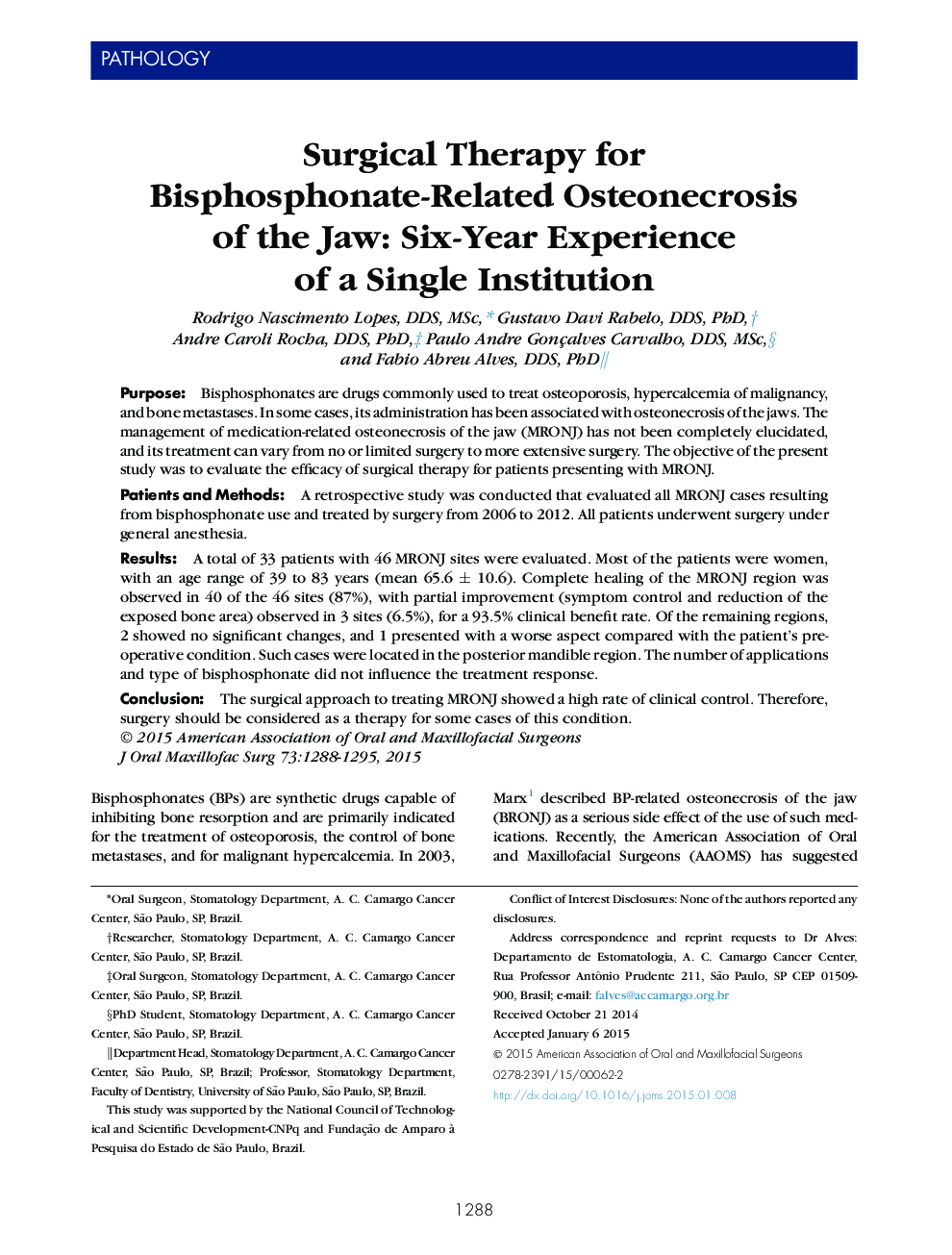| Article ID | Journal | Published Year | Pages | File Type |
|---|---|---|---|---|
| 3157729 | Journal of Oral and Maxillofacial Surgery | 2015 | 8 Pages |
PurposeBisphosphonates are drugs commonly used to treat osteoporosis, hypercalcemia of malignancy, and bone metastases. In some cases, its administration has been associated with osteonecrosis of the jaws. The management of medication-related osteonecrosis of the jaw (MRONJ) has not been completely elucidated, and its treatment can vary from no or limited surgery to more extensive surgery. The objective of the present study was to evaluate the efficacy of surgical therapy for patients presenting with MRONJ.Patients and MethodsA retrospective study was conducted that evaluated all MRONJ cases resulting from bisphosphonate use and treated by surgery from 2006 to 2012. All patients underwent surgery under general anesthesia.ResultsA total of 33 patients with 46 MRONJ sites were evaluated. Most of the patients were women, with an age range of 39 to 83 years (mean 65.6 ± 10.6). Complete healing of the MRONJ region was observed in 40 of the 46 sites (87%), with partial improvement (symptom control and reduction of the exposed bone area) observed in 3 sites (6.5%), for a 93.5% clinical benefit rate. Of the remaining regions, 2 showed no significant changes, and 1 presented with a worse aspect compared with the patient's preoperative condition. Such cases were located in the posterior mandible region. The number of applications and type of bisphosphonate did not influence the treatment response.ConclusionThe surgical approach to treating MRONJ showed a high rate of clinical control. Therefore, surgery should be considered as a therapy for some cases of this condition.
